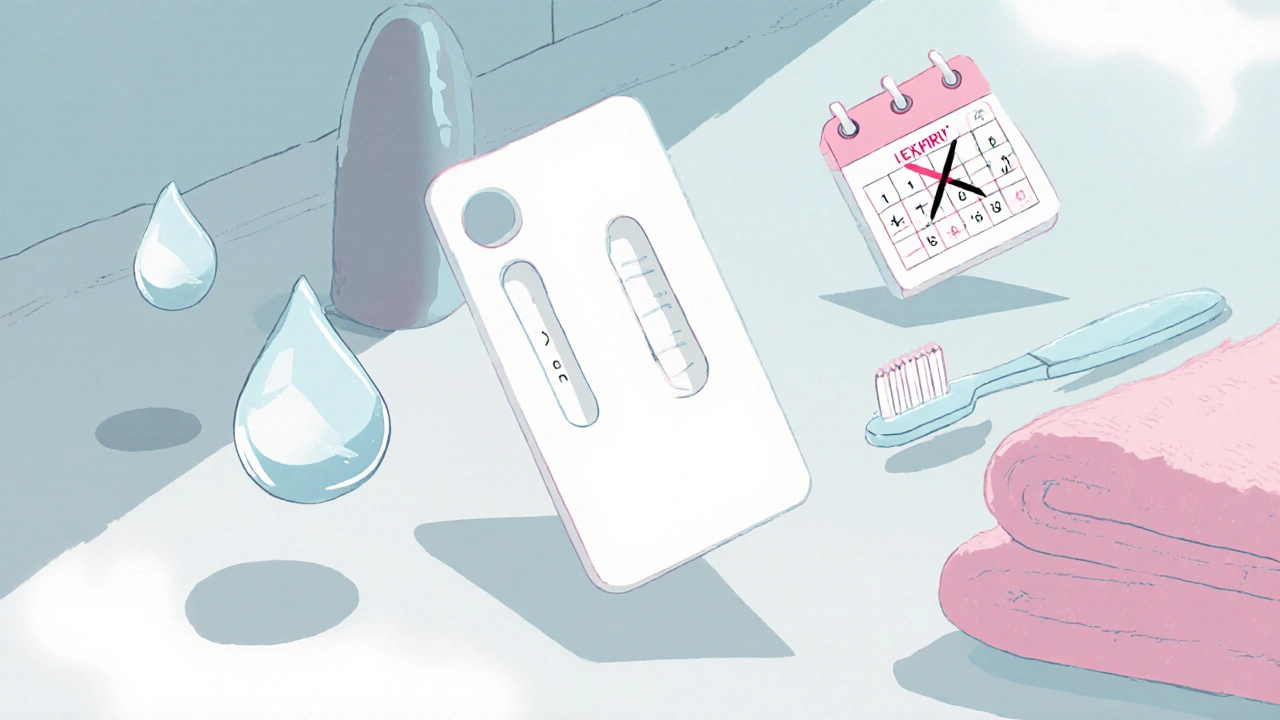Pregnancy test cards are highly accurate but can give false results due to timing, expired tests, or medical conditions. Learn the real reasons behind false negatives and positives-and what to do next.
Home Pregnancy Test: How They Work, When to Use Them, and What to Expect
When you suspect you might be pregnant, a home pregnancy test, a simple urine-based tool that detects the hormone hCG to confirm early pregnancy. Also known as a urine pregnancy test, it’s the first step millions take to answer one of life’s biggest questions—without a doctor’s visit. These tests are designed to be fast, private, and accurate when used correctly. They don’t need special equipment, blood draws, or appointments. You just pee on a stick, wait a few minutes, and get an answer.
But not all tests are the same. Some detect pregnancy as early as six days before a missed period, while others wait until after. The key is the hormone hCG, human chorionic gonadotropin, produced by the placenta shortly after a fertilized egg attaches to the uterus. The higher the hCG level, the clearer the result. That’s why taking the test too early can give a false negative—even if you’re pregnant. Most doctors recommend waiting until the first day of your missed period for the most reliable result. If you test too soon and get a negative, wait a few days and try again.
False positives are rare, but they can happen. Certain medications, rare medical conditions like ovarian tumors, or even recent miscarriages can trigger a positive result even when you’re not pregnant. On the flip side, diluting your urine by drinking too much water before the test can mask hCG levels and lead to a false negative. That’s why using your first morning urine gives the best chance of catching the hormone at its highest concentration.
These tests aren’t just about detecting pregnancy—they’re about giving you control. Whether you’re trying to conceive or avoiding pregnancy, knowing your status early helps you make faster decisions. You can start prenatal vitamins, adjust your diet, or schedule your first OB appointment sooner. For those who aren’t planning to be pregnant, a positive result means it’s time to talk to a provider about next steps.
What you’ll find below is a collection of real, practical guides that go beyond the basics. You’ll see how home pregnancy tests compare to blood tests, why some brands are more sensitive than others, what to do if results are confusing, and how stress, timing, or even expired tests can mess with your results. These aren’t theory pieces—they’re real-world tips from people who’ve been there. Whether you’re holding your first test strip or wondering why your second test showed a different result, you’ll find answers here that cut through the noise.

